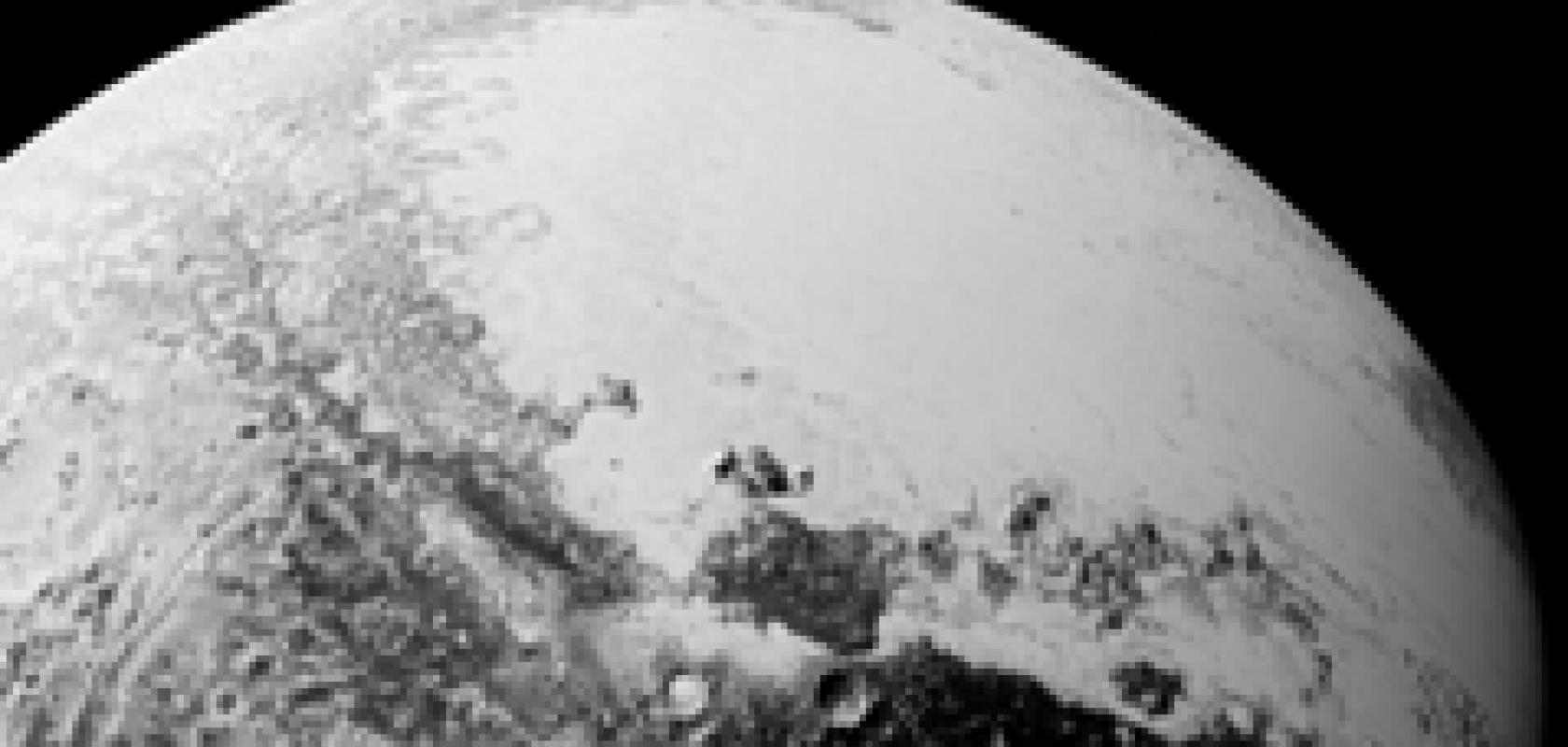Images transmitted from Nasa’s New Horizons spacecraft have more than doubled the amount of Pluto’s surface seen at resolutions as good as 400 metres per pixel. They reveal features such as possible dunes, nitrogen ice flows, mountains, and networks of valleys that may have been carved by material flowing over Pluto’s surface.
‘The surface of Pluto is every bit as complex as that of Mars,’ said Jeff Moore, leader of the New Horizons Geology, Geophysics and Imaging (GGI) team at Nasa’s Ames Research Center in Moffett Field, California. ‘The randomly jumbled mountains might be huge blocks of hard water ice floating within a vast, denser, softer deposit of frozen nitrogen within the region informally named Sputnik Planum.’
The images were captured by the Long Range Reconnaissance Imager (LORRI) onboard New Horizons. LORRI is a panachromatic high-magnification imager focusing light onto a CCD with an 8.2-inch telescope. New Horizons flew past Pluto on 14 July after taking 10 years to reach the dwarf planet.
Images returned have also revealed that Pluto’s global atmospheric haze has many more layers than scientists realised, and that the haze actually creates a twilight effect that softly illuminates night-side terrain near sunset, making them visible to the cameras aboard New Horizons.
‘This bonus twilight view is a wonderful gift that Pluto has handed to us,’ said John Spencer, a GGI deputy lead from the Southwest Research Institute (SwRI), Boulder, Colorado. ‘Now we can study geology in terrain that we never expected to see.’
Related articles:
New Horizons spacecraft begins to transmit images of Pluto
Further information:


